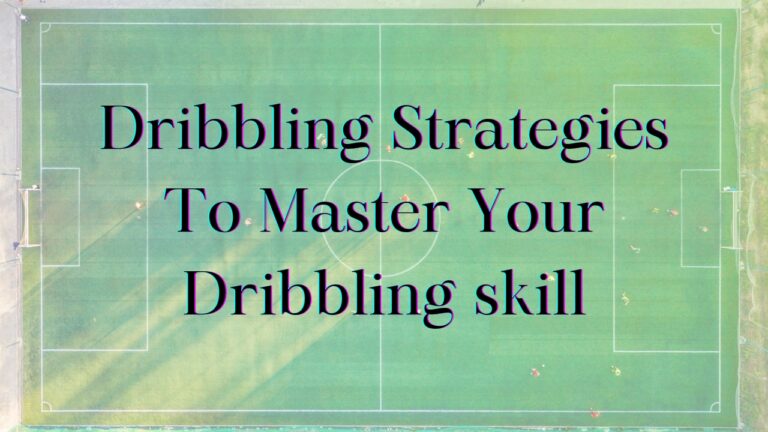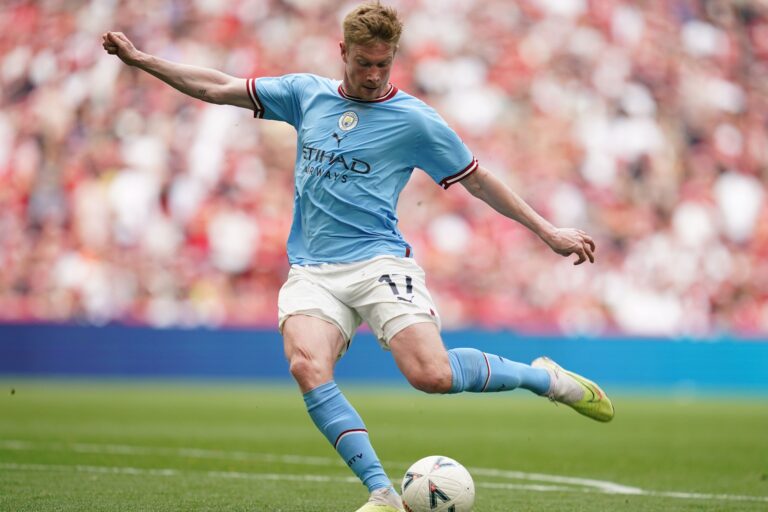Soccer is a team sport that requires players to excel in both attacking and defending. While strikers get most of the glory for scoring goals, defenders play a crucial role in stopping the opposition from finding the back of the net.
There are several types of defenders in soccer, each with specialized duties on the pitch. Understanding the different defensive positions is key to interpreting the tactics and formations that managers deploy.
Center Backs – The Core of the Defense
The center-back is the most common type of defender you’ll find in a soccer team. Their primary responsibility is to stop attacks through the middle and prevent the opposition from getting into dangerous scoring positions.
Centerbacks are normally the strongest and most physical players on the team. They need exceptional heading ability to clear crosses and corner kicks. Tackling skills are also vital to dispossess the opposition attackers.
Strong positioning and reading of the game allow center-backs to anticipate where threats will come from and cut them out before they materialize. Communication with the rest of the defense is also key to the organization and coordination of the backline.
Some examples of famous center-backs throughout history include Franco Baresi, Bobby Moore, and Virgil Van Dijk. The best center-backs exude confidence, leadership, and defensive intelligence in marshaling their defense.
Full Backs – Patrol the Flanks

While center-backs operate mainly through the middle, full-backs have the duty of defending the wings and preventing dangerous crosses into the penalty box.
Fullbacks need speed and stamina to keep up with tricky opposition wingers who are constantly trying to beat them down the channels. The timing of tackles and interceptions is crucial when facing faster opponents.
In modern games, fullbacks are also expected to join the attack when their team goes forward. Overlapping runs down the sidelines provide offensive width and allow fullbacks to whip crosses into the box.
Some of the best fullbacks in soccer history include Roberto Carlos, Philipp Lahm, Ashley Cole, Marcelo, and Jordi Alba. Their ability to balance both defensive and attacking responsibilities makes them invaluable.
The full-back positions have become even more specialized in recent times. Teams may utilize a more defensive-minded full-back on one side to deal with a dangerous winger, while the other side’s full-back has license to push forward.
Fullbacks help provide vital width to the team in all phases of play. Their non-stop running up and down the flanks ties together both defense and attack.
Wing Backs – The Width Providers

Wingbacks are hybrid players who combine the roles of fullbacks and wingers. They operate on the furthest wide areas of the pitch.
In attack, wingbacks are expected to hug the touchline and provide offensive width. Their pace and dribbling ability enable them to fly down the flanks and stretch defenses. Whipped crosses are a regular part of their attacking repertoire.
Defensively, wing backs must quickly track back to fulfill their duties. Their speed allows them to close down opposition fullbacks and prevent crosses into the box.
Wingbacks have become a popular option in systems that utilize three-center backs. The extra central defender provides cover which gives the wing backs license to push forward.
Managers have also used wing backs in a 4-4-2 formation to provide width high up the pitch. When defending, they can drop back to form a defensive line of four.
Famous wingbacks include Dani Alves, who terrorized defenses with his marauding runs for Barcelona and Brazil. Gareth Bale also successfully transitioned from a winger to an attacking wing-back role.
The evolution of the wingback highlights how specialized modern soccer positions have become. Wing-backs must now be supreme athletes who can excel at both ends of the pitch.
Sweepers – The Last Line of Defense
The sweeper is a type of defender who patrols the space behind the defensive line, acting as the last shield in front of the goalkeeper.
Unlike other defenders who mark zonally or man-to-man, the sweeper’s job is to “sweep up” any danger that gets through. Their aerial ability, reading of the game, and courage are essential attributes.
Sweepers have the license to break defensive positioning and intercept attacks before they reach the penalty area. They can cover for fullbacks who have pushed forward.
In possession, sweepers have the skill to bring the ball out of defense and initiate attacks from deep positions. Having a sweeper allows the team to play the offside trap, squeezing high up the pitch.
Franz Beckenbauer is considered the prototypical sweeper, commanding the West German defense in the 60s and 70s. Other famous sweepers include Franco Baresi and Matthias Sammer, who excelled at starting quick counterattacks.
The sweeper position has decreased in popularity as teams favor zonally marked-back fours. But a commanding sweeper remains a weapon for teams looking to take more risks in defense.
Defensive Midfielders – The Protectors

The defensive midfielder plays right in front of the back four, providing an additional shield in front of the central defenders.
Defensive midfielders are expected to break up opposition attacks before they reach the defensive line. They tackle, intercept passes, and win aerial duels against opponents.
Positioning is crucial for defensive midfielders. By sitting deep between the lines, they limit the space between the midfield and defense for attackers to exploit.
In possession, defensive midfielders act as the first pass from the central defenders to instigate attacks. However, they rarely join the attack. Their positioning allows the fullbacks to push forward.
Top defensive midfielders like N’Golo Kante and Sergio Busquets specialize in interceptions and starting counterattacks. Their defensive instincts provide the platform for the team’s creative players to thrive.
The defensive midfielder must have exceptional defensive awareness and discipline to hold their position. Teams often deploy a double pivot with two defensive midfielders for added protection.
Conclusion
Defenders play a crucial role in soccer, with the task of stopping goals at one end and starting attacks from the back. There are several specialized types of defenders in the modern game.
Center backs form the core of the defense, using their physicality and reading of the game to stop attacks down the middle. Fullbacks patrol the wings and prevent crosses while providing width in attack.
Wingbacks operate in the furthest wide areas, tasked with stretching play on the flanks. Sweepers act as the last line of defense, mopping up danger. Defensive midfielders screen the backline and provide the first pass out from defense.
Understanding these different defensive positions is key to analyzing the tactics and systems that managers employ. The evolution of soccer has seen increased specialization and new roles like wing-backs emerge.
Related Post: The Top 10 Best Soccer Strikers in the World 22/23 Season






